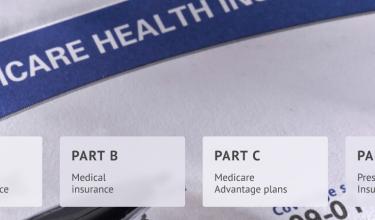Medicare Prescription Drug Benefit
What is Medicare Part D
Medicare Part D is the prescription drug benefit portion of Medicare. Medicare is the American health care program for people who are age 65 or older. This portion of the program helps people pay for prescription drugs, which can be quite pricey. This plan is mostly for drugs that patients take themselves at home. Medications that are administered in a healthcare environment are usually covered under other portions of Medicare. The drugs on this plan are usually called outpatient drugs and include prescriptions you might take every day.
Medicare Part D is totally optional and you must be signed up for either Medicare part A or B in order to sign up for this one. You should sign up for it as soon as you turn 65 years old because otherwise you might have to pay a late-enrollment fee. Parts A and B do not typically cover your prescription medications, which is why Part D was introduced in the early 2000s. This program helps our aging members of society pay for their prescriptions which is very important because they often have less income and less ability to pay for expensive prescriptions that they need even more as they age.
This portion of Medicare was first introduced by President Bill Clinton in the year 2000, but wasn’t fully put into action until 2006 as part of the Medicare Modernization Act that helped Medicare come into the modern age. Now our elder members of society have been enjoying have some assistance to pay for their prescriptions for a while.
History of Medicare Part D

In order to talk about the history of Medicare Part D, we must also talk about the history of Medicare itself. Medicare itself was enacted in 1965 to help older people pay for medical costs no matter what their income or work history was. One historical fact about Medicare is that its funding to hospitals was only given to those that decided to desegregate their waiting rooms and treatment areas, so it forced hospitals to desegregate so they could receive funding. Until 2006, coverage for prescription drugs through Medicare was not readily available. It was a big problem because pharmaceutical costs keep rising in the United States. Older people could not afford their medications and were traveling abroad to get them for cheaper.
In the year 2000 Bill Clinton, who was the president at the time, proposed Medicare Part D to help alleviate the costs for older people. The change was signed into law along with the Medicare Modernization Act that passed in 2003, which also offered changes to Part C which allows you to get Medicare insurance through a private company. The law finally came into effect in 2006, allowing people to get their prescription drug insurance through Medicare.
Just a year after the plan went into effect it has 24 million people enrolled on it, which shows just how needed it was. This was even more than the amount that had been estimated when the program went into effect, which was only about 11 million people. Now you can get prescription coverage through Medicare Part D.
Are you eligible for Medicare?
Compare options and find the right plan that works for you.
Problems of Medicare Part D in 2018

While Medicare Part D is a great program, no program is without its issues. There are several major issues that Medicare Part D faces, even to this day.
First of all, in 2013 an expose was put out that showed just how Medicare Part D lacks oversight. Doctors prescribe expensive brand name medications when a more affordable generic version is available. They also revealed that some doctors prescribe medications that are not even really necessary.
The expose showed that this lack of oversight can cost taxpayers a lot of money, since Medicare Part D is funded by tax payers.
However, the biggest problem with Medicare Part D might be the coverage gap known as the “donut hole.” How this works is that once you reach the small deductible ($405 in 2018) you have a good amount of coinsurance for prescriptions up to a total cost of $3750. Then in between $3750 and the “catastrophic” amount, $7508, you are pretty much on your own, with a much lower rate of coinsurance. If you hit that higher amount, you will only have to pay 5% of the cost of your prescription drugs, however, not all elderly people have about $4000 to blow on drugs every year.
Some people may qualify for a low-income subsidy to help pay for this, but it’s not a sure thing for everyone. Those who are in the donut hole may feel stressed out about how they are going to pay for their drugs through a prescription drug benefit. The worst part is that the whole thing resets at the beginning of the next year. With the expensive cost of drugs and the types of health problems that older people have, it’s no wonder this is a big factor in debates about Medicare Part D.

